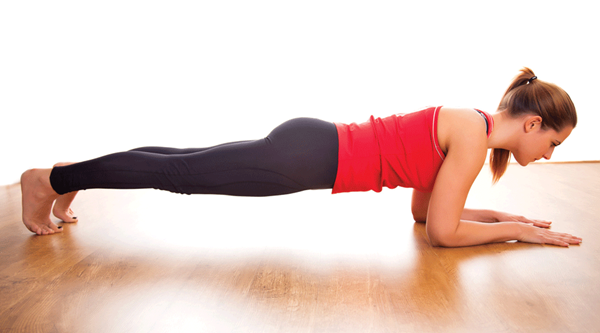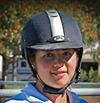
Q: How Do I Stay on My Seat During Transitions?
I’m having a hard time staying on my seat. My horse easily pulls me out of the saddle onto my crotch during transitions, particularly downward transitions. I feel leaning back is not really an option, or is it? Do you know any exercises that can help me stay on my seat during transitions?
Name withheld by request
A: In a smooth transition the horse will maintain balance, suppleness and energy. The horse will shift more weight onto his hind end and off the front end without losing energy from the hind legs, like a plane landing on a runway. If the nose or front-end drops and the energy decreases on or before the touchdown, there’s a crash. Some of the most common faults on the rider’s behalf that cause a heavy transition are collapsing in the body, a loose seat and pulling or balancing on the reins, which all stem from a weak core.
To address the point in the question, leaning back in the downward transitions is not an option. When you lean back in the downward transitions, your seat bones are driven into the horse’s back, causing the horse to hollow his back, putting more weight onto his forehand, causing him to lose energy and putting the hind legs more behind than under his body. Essentially, if you lean back, it will increase the problem of the horse’s weight falling into your hands rather than fixing it.
For a good transition you should maintain an independent seat, a strong core and a balanced head–shoulder–hip–heel alignment. If you collapse and lose your balance, the horse will also lose his balance and fall on the forehand into your hands. Instead, weight your seat, lift your upper abdominal muscles and mid-back muscles, as if you were taking a deep breath. If you feel the horse pull, support him with your core, shoulders and upper back, not your arms, and think of transitioning the extra weight into a balanced seat. I envision an oak tree, and if something pulled on my branches, I would take the extra weight in my trunk (core) and roots (seat), rather than react as a willow tree, where my branches are floppy with a lot of give and take and can be pulled easily, which would happen if I collapsed in my midsection and tried to use just my arms to support my horse’s balance. In the oak tree versus willow tree image, your body doesn’t fall back onto the horse’s mouth when you rebalance, but holds a strong, balanced position.
Another important point to be aware of is if you use your hands before your seat it causes the horse to pull on the reins in the down transitions. This exercise is helpful to practice to use your seat before your hand and encourage the horse to listen to your seat. Start by riding in a working gait, making sure there is a good quality and balance. When you ask for a down transition, sit tall, putting your weight in your seat and legs, stopping the motion with your back and core. If the horse doesn’t listen or falls forward, immediately follow with a stronger rein aid, maintaining your solid core to help clarify with the horse what you want. With practice, your horse will start to realize that the seat is the down or half-halt aid, and not the hands. This is extremely important for collecting the gaits as well since you will increasingly ask the horse for more down transitions in the gait.
One of the most common issues that cause a loose seat in heavy transitions is the rider’s core fitness. To improve core fitness, I find that using a mix of Pilates and yoga exercises can be quite effective. They work the front, side and back muscles of the core. Stretching exercises are also important as they loosen up your body and prevent you from tightening into the bad posture habits that we develop when not riding.
In conclusion, for balanced transitions the horse must maintain balance and energy and not fall onto the forehand. As the rider, you need to provide a solid—not tense or bracing—posture in order not to disturb your horse’s balance and be prepared to support or aid his balance to keep weight on his hind end. An independent seat and strong core are imperative to achieve these goals. It is equally important/necessary then to pratice a good riding posture and develop a strong, effective core. Using unmounted exercises to improve these points help increase your ability to be effective on the horse.
Katie Hoefs-Martin is a USDF bronze, silver and gold medalist and has earned her USDF silver and gold Freestyle Bar. She graduated from the USDF “L” Education Program with distinction and is working toward her “r” judge’s license. She trains and competes horses from young-horse to Grand Prix level at KHM Dressage in California. (khmdressage.com).












